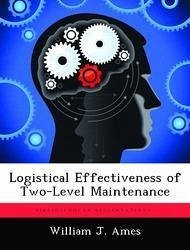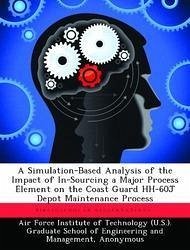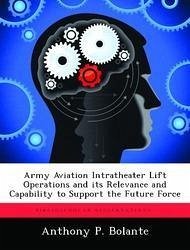Nicht lieferbar

Effectiveness of Condition Based Maintenance in Army Aviation
Versandkostenfrei!
Nicht lieferbar
Technology has significantly enhanced our ability to detect and monitor the health and condition of critical components in Army aviation. By combining these technological advances with the existing systems for vibration analysis, we have developed a maintenance management program based on the health condition of the components rather than time-driven inspections and replacements. One vibration analysis program, the Health Usage and Management System (HUMS), developed for the UH-60 Blackhawk, was examined in this study. The purpose of this thesis is to determine whether Condition Based Maintena...
Technology has significantly enhanced our ability to detect and monitor the health and condition of critical components in Army aviation. By combining these technological advances with the existing systems for vibration analysis, we have developed a maintenance management program based on the health condition of the components rather than time-driven inspections and replacements. One vibration analysis program, the Health Usage and Management System (HUMS), developed for the UH-60 Blackhawk, was examined in this study. The purpose of this thesis is to determine whether Condition Based Maintenance (CBM) provides a distinct advantage over phase or time-driven inspections and component replacement in Army Aviation. To answer this question we have identified a series of metrics to assess the efficiency and usefulness of CBM. During the analysis portion of this study we examined two assault helicopter battalions, one HUMS-equipped and one without, and applied these metrics. This study determined that HUMS does provide an advantage in flight hours completed and operational readiness rates, coupled with a marginal decrease in hours of non-mission capable for maintenance reported. While this thesis also found an increase in efficiency in dollars spent per operational flight hour, the data set was too small to draw major conclusions. Recommendations for further study include incorporating this new system into failure mode identification and improved maintenance procedures. This work has been selected by scholars as being culturally important, and is part of the knowledge base of civilization as we know it. This work was reproduced from the original artifact, and remains as true to the original work as possible. Therefore, you will see the original copyright references, library stamps (as most of these works have been housed in our most important libraries around the world), and other notations in the work. This work is in the public domain in the United States of America, and possibly other nations. Within the United States, you may freely copy and distribute this work, as no entity (individual or corporate) has a copyright on the body of the work. As a reproduction of a historical artifact, this work may contain missing or blurred pages, poor pictures, errant marks, etc. Scholars believe, and we concur, that this work is important enough to be preserved, reproduced, and made generally available to the public. We appreciate your support of the preservation process, and thank you for being an important part of keeping this knowledge alive and relevant.















